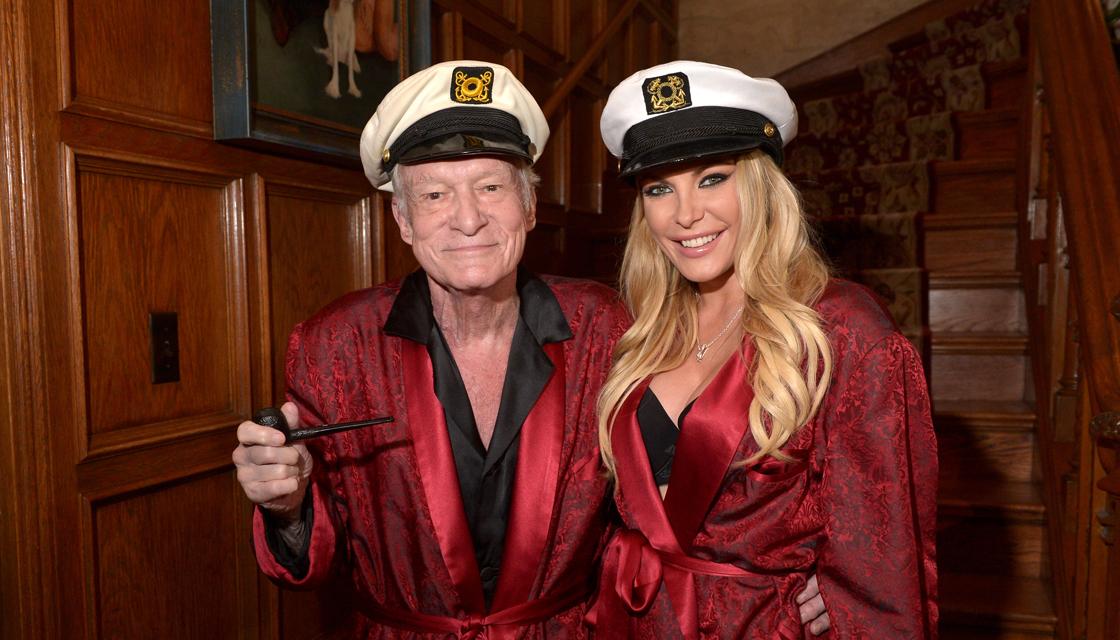OPINION: Legendary Playboy publisher - and playboy himself - Hugh Hefner has died on Thursday aged 91.
He symbolised an idealised version of the American man - a wealthy intellectual with excellent taste in jazz music and literature - with a fondness for young attractive women.
- Hugh Hefner dies aged 91
- Hugh Hefner has weeks to live - report
- Hugh Hefner hits back at former Playmate
He busted taboos by featuring photos of completely naked women in his iconic Playboy magazine when Hefner founded it in 1953. The first issue featured a nude Marilyn Monroe, and by doing so, Hefner played an important role in the sexual revolution.
"Quite frankly," he said on the NPR interview program 'Fresh Air' in 1999, "the women's movement from my point of view was part of the larger sexual revolution that Playboy had played such a large part in."

But Playboy was more than a magazine full of naked women for dirty old (and young) men.
It was an intellectuals' magazine, which became famous for publishing work by Ian Fleming, Chuck Palahniuk, Ray Bradbury, and John Updike.
Iconic Kiwi rock band Split Enz was also featured in the magazine in the early 1980s, publishing an interview with co-founder and lead singer Tim Finn.
It also featured long-form interviews with Martin Luther King Jr, Malcolm X, Muhammad Ali, and John Lennon.
"My dad's aim when launching Playboy was to promote a healthy conversation about sex while also encouraging dialogue on social, philosophical and religious opinions," his son Cooper Hefner says.
"The idea behind the magazine was that while these topics were popular in people's minds, they were almost never spoken about in public or discussed over dinner or drinks at cocktail parties around the country, as they should have been.
"Nonetheless, many misinterpreted that message or missed it entirely, choosing instead to focus on the magazine's unapologetic portrayal of nudity and its revolutionary approach to sex, including conversations about the act itself."
The magazine reached its peak in the early 1970s, with a circulation of 7 million.
During these glory years, Hefner claimed to be "involved with maybe 11 out of 12 months' worth of Playmates", as well as experimenting with bisexuality.
Hefner embraced the power of Playboy's image, expanding into clubs and reality television shows. Playboy became an iconic lifestyle brand, its ubiquitous rabbit logo appearing on everything from swimwear to car stickers.

At his Playboy mansion, Hefner held infamous parties and orgies, where he was surrounded by scantily-clad women - and his Playmates.
But culture changes, and increasingly the content Hefner was famous for became commonplace throughout society.
Playboy's circulation began falling in the late 1970s, largely thanks to competition from rival pornographic magazine Penthouse, which often contained more sexually explicit content than could be found in Playboy.
"We will never recapture the importance of Playboy in the '60s and '70s," he told The Washington Post in 2003, "because we changed the world. We live in a Playboy world now, for good or ill."
Hefner's private life lived up to his reputation.
He divorced his first wife Mildred after 10 years of marriage in 1959.
His second wife was Playmate Kimberley Conrad, 36 years his junior, who he married in 1989.
After separating, Hefner had a number of girlfriends - often at the same time - including "number one" Holly Madison.

Madison wrote a book about her life at the iconic mansion, Down the Rabbit Hole: Curious Adventures and Cautionary Tales of a Former Playboy Bunny, in which Madison claims she was miserable during her time there and even contemplated suicide.
Increasingly, Hefner seemed a throwback, a rich sugar daddy dating women under half his age.
He married a third time in 2012 when he was 86 to 26-year-old Crystal Harris.

Scott Palmer is a Digital News Producer at Newshub.
